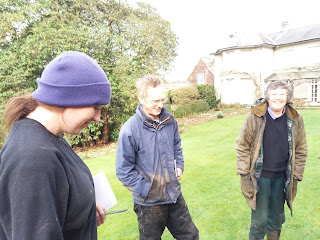Snow drop sensationalism
Jennifer Wright – February 2019
As the snowdrop season is coming to an end. I would like to
take a moment to look back on the little white flowers. I think almost everyone
can remember childhood walks to school. Spotting snowdrops in February meant
that winter is almost over and spring is surely on its way. It is definitely one
of my most precious memories. Growing up my mum spent many autumns planting
snowdrops and after a few years they would all fizzle out. Only 1 patch in the
front garden now flowers reliably every year. I began to think that maybe
snowdrops were really hard to grow. Turns out I couldn’t be more wrong. Most
species and cultivars of snow drops like well drained moist soil (a slight
oxymoron but it is a well used term by gardeners when a plant likes a little
bit of this and little bit of that) and full sun to partial shade. Mulch after
flowering, usually in the spring.
The reason that snowdrops are such a common and nostalgic
sight to us all is because they have been naturalised in most of the U.K.
Naturalising is the term for establishing a plant (or sometimes an animal) in an
area which it is not indigenous. That is the dictionary definition for it and
it pretty much applies for what we do with bulbs. To naturalise bulbs in an area,
it can take a long time or an astounding amount of money. Starting with a few
bulbs planted, snowdrops in this case, groups can be left to flower, seed and
move about on their own. We can also give them a helping hand by digging some
out every few years, dividing them and then replanting slightly further away.
This process can take anywhere between 3-10 years before a carpet of bulbs is
in the ground. It’s long but cheap. If you have lots of money to spare, like
some of the larger organisations, bulbs can be planted in their thousands which
effectively guarantees that next year you will have a carpet fit for a king.
 |
| Snowdrop 'walk and talk' with students @TGardenHouse |
The snowdrop that most of us are familiar with is the
naturalised Galanthus nivalis. It’s
grows and flowers unchecked on road verges, in woods and gardens. It might surprise
you to know that this snowdrop isn’t actually native to the U.K. Its native
range covers Europe from Germany through to Northern Greece growing in high altitudes
on the sides of hills and mountains. It’s
not certain exactly when this particular snowdrop was introduced to the British
Isles but it has been recorded in the U.K from 1648 in Oxford Botanic Garden.
This early snowdrop fascination continues today as even more species such as elwesii and plicatus are introduced and hybridised into more and more peculiarly
fascinating versions of themselves flowering from October all the way through
to early March.
To name all of the snowdrops hybrids available on the market would
be almost impossible and probably pretty boring for everyone involved. There
are somewhere between 2000-4000 known hybrids and cultivars which have been
bred or “discovered”. I know what you are thinking… There is a big jump from
2000-4000 but as with everything some gardeners and breeders can’t agree so
that’s where the confusion comes in. I am going to show you one of my favourites
which we just so happen to have here at The Garden House.
 |
| Galanthus 'Big Eyes' flowering @TGardenHouse |
Galanthus ‘Big Eyes'
This is a snowdrop that just makes me happy. Its inner segment
has what resembles a clown face in green spots on a white background. Now, I
hate clowns. They are definitely creepy but this snowdrop makes me happy and
all gooey inside. Not very common and a little expensive, I would still stay
that this snowdrop is worth having even if it is just for novelty sake. This
isn’t one for naturalising but for keeping in a border where it can be easily
viewed.
With so many hybrids available, how can you know which one
you want? The answer is… Collect them all! A Galanthaphile is someone who
collects snowdrops with enthusiasm, passion and sometimes almost single-minded focus.
International love for these small bulbs has brought people from all over the
world together to share, collect and admire. I think you can liken
Galanthaphiles in spring to shopaholics in a clothes store during sale season, a
little scary and a little exasperating. I say this in jest. In truth, I admire
Galanthaphiles for their adoration of the genus and in reality, to know so much
about one genus is incredible and something to look up to.
This year’s snowdrops are almost over but there is always
next year so if you are feeling inspired and want to look into snowdrops in
more detail, I have put in some useful links below:
 |
| Galanthus 'Trumps' |






